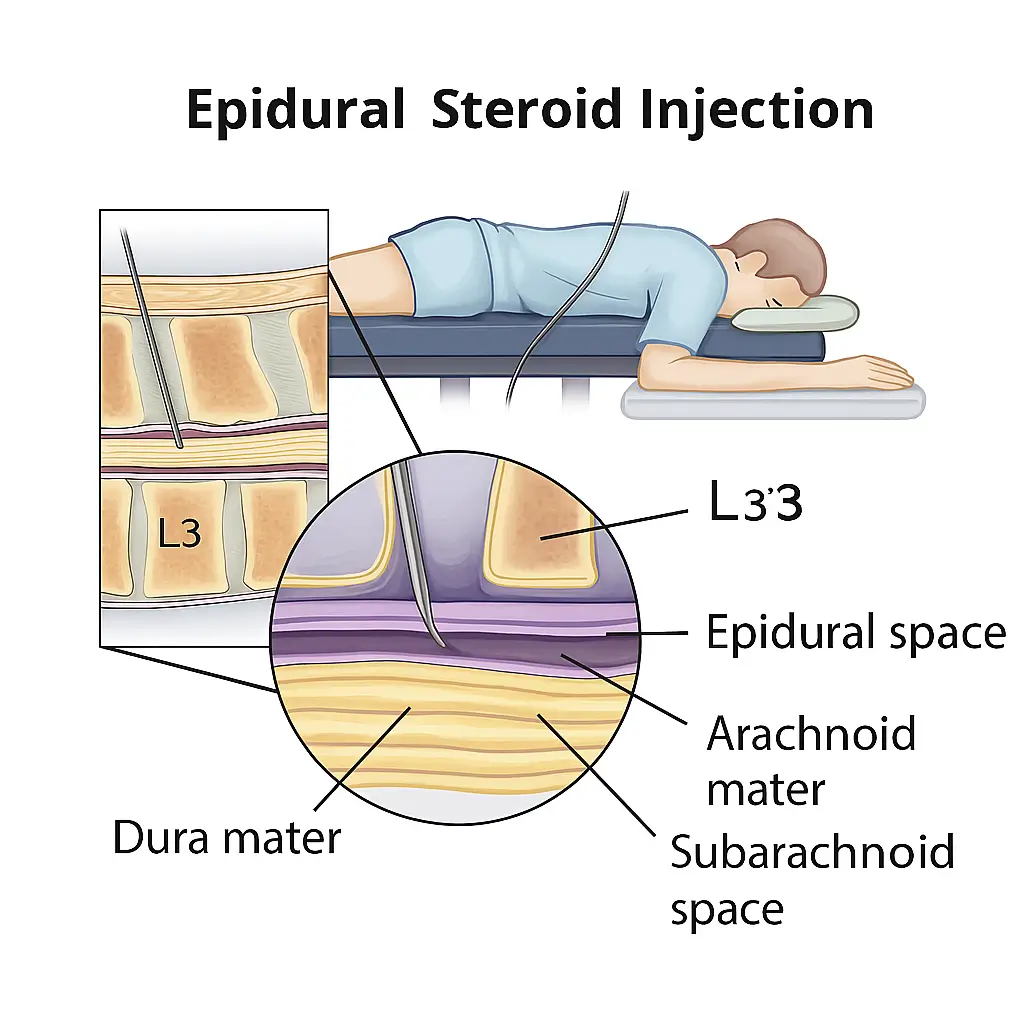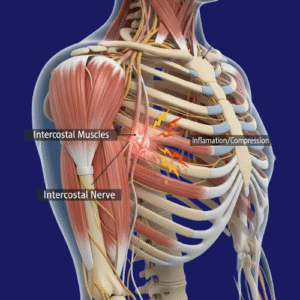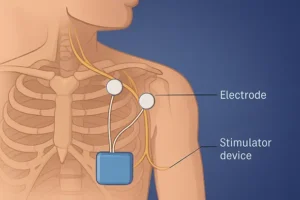Epidural steroid injections (ESIs) are a common and effective treatment used to manage pain caused by inflammation or irritation of spinal nerves. The procedure involves the injection of a corticosteroid (a potent anti-inflammatory medication) into the epidural space, the area surrounding the spinal cord, and nerve roots. ESIs are frequently used to treat conditions like herniated discs, spinal stenosis, and sciatica, where nerve compression leads to pain, numbness, or weakness. By reducing inflammation and swelling around the nerves, epidural steroid injections can provide significant pain relief, improve mobility, and allow patients to engage in physical therapy or other treatments aimed at addressing the underlying condition.
Reasons for Epidural Steroid Injections
Epidural steroid injections are typically recommended for patients experiencing chronic or severe pain related to spinal conditions, particularly when conservative treatments like physical therapy, oral medications, or lifestyle changes have not provided sufficient relief. Conditions such as herniated discs, spinal stenosis, degenerative disc disease, and sciatica are common reasons for administering an epidural steroid injection (ESI). In some cases, a Medial Branch Block (MBB) injection may also be used to determine if the facet joints are a source of pain before proceeding with steroid-based treatments. The goal of the injection is to reduce inflammation and alleviate nerve compression, which can significantly decrease pain and improve quality of life. In some cases, ESIs are also used as part of a comprehensive pain management plan before considering surgical options.
Types of Epidural Steroid Injections
There are three main types of epidural steroid injections, each designed to target different parts of the spine:
- Interlaminar Epidural Steroid Injection (ILESI): This type involves injecting the medication into the epidural space through the space between two vertebrae. It is typically used for pain that affects a larger area, such as the lower back or neck.
- Transforaminal Epidural Steroid Injection (TFESI): In this approach, the injection is administered through the foramen (the opening where the nerve roots exit the spinal cord). This type is often used for targeted relief when pain is radiating down the arms or legs, such as with sciatica.
- Caudal Epidural Steroid Injection: This method involves injecting the steroid medication into the epidural space via the sacral hiatus, a small opening at the base of the spine. It’s typically used for pain in the lower back, buttocks, or legs.
Each of these methods is chosen based on the patient’s symptoms, the location of the pain, and the physician’s assessment.
Who Should Get an Epidural Steroid Injection
Epidural steroid injections are generally considered for patients who suffer from chronic pain due to conditions like herniated discs, spinal stenosis, sciatica, or degenerative disc disease, particularly when conservative treatments such as physical therapy, medication, or lifestyle changes have failed. Candidates for ESIs are typically those who experience significant pain that limits their daily activities and have been diagnosed with nerve compression. It’s important that a patient undergoes a thorough evaluation by a spine specialist to ensure the underlying cause of the pain is appropriately addressed. ESIs are not suitable for everyone, and patients with certain conditions such as active infections, spinal instability, or uncontrolled diabetes may be advised against this procedure.
Possible Side Effects of Epidural Steroid Injections
While epidural steroid injections are generally safe, they can come with some potential side effects. Common side effects include temporary pain or soreness at the injection site, headaches, and a sensation of weakness or numbness in the legs or arms, depending on the location of the injection. Some patients may experience a temporary increase in pain or discomfort shortly after the injection, known as a “steroid flare,” which typically resolves within a few days. Other, more serious side effects are rare but can include infection, bleeding, nerve damage, or allergic reactions to the steroid or anesthetic. Long-term use of steroids may also carry risks such as weakening of the bones, joints, or soft tissues, though these complications are typically linked to repeated or high-dose injections.
Procedure Process of an Epidural Steroid Injection
Epidural steroid injections are typically performed in an outpatient setting, often under fluoroscopic (X-ray) guidance to ensure precise placement of the needle. The procedure usually begins with the patient lying face down on an examination table. After cleaning the skin with an antiseptic solution, a local anesthetic is injected to numb the area around the injection site. Once the area is sufficiently numb, the physician uses fluoroscopy to guide a needle into the epidural space. The steroid medication, often combined with a local anesthetic, is injected into the epidural space near the affected nerve root. The procedure generally takes about 15 to 30 minutes, and patients are typically monitored for 30 minutes to an hour after the injection before being discharged.

Recovery After an Epidural Steroid Injection
The recovery process after an epidural steroid injection is generally quick, and most patients can resume normal activities within a day or two. However, it is advised to avoid heavy lifting or strenuous activities for a short period after the injection to prevent irritation of the treated area. Some patients may experience mild soreness or increased pain in the days following the procedure, but this is usually temporary. In many cases, pain relief may take a few days to several weeks to fully develop, and the effects of the injection can last from a few weeks to a few months, depending on the individual and the severity of the condition. Patients should follow up with their doctor to monitor the results of the injection and discuss any further treatment options if needed. Additionally, physical therapy or other rehabilitation strategies may be recommended to help strengthen the spine and prevent future issues.
Conclusion
Epidural steroid injections offer a minimally invasive and effective solution for managing chronic back and nerve pain caused by conditions like herniated discs, spinal stenosis, and sciatica. By reducing inflammation and relieving pressure on the spinal nerves, epidurals for back pain can significantly improve mobility and quality of life for many patients. While not suitable for everyone, they remain a valuable option within a broader pain management plan when conservative treatments fail to provide relief.
If you’re struggling with persistent back pain and want to explore whether an epidural steroid injection is right for you, our pain management specialists are here to help. Schedule a consultation today and take the first step toward lasting relief.



